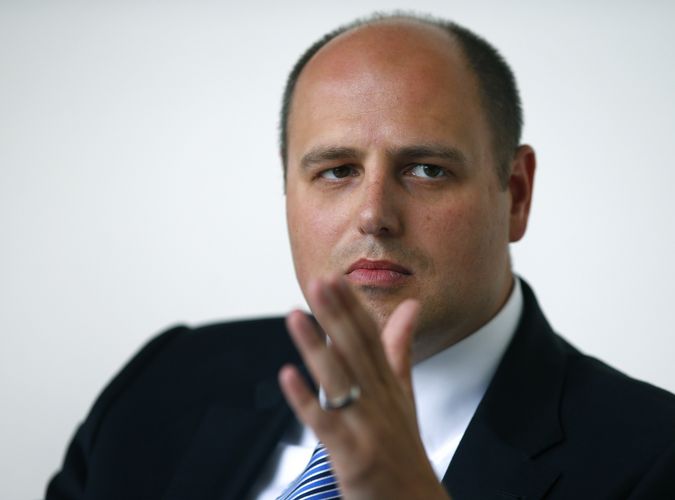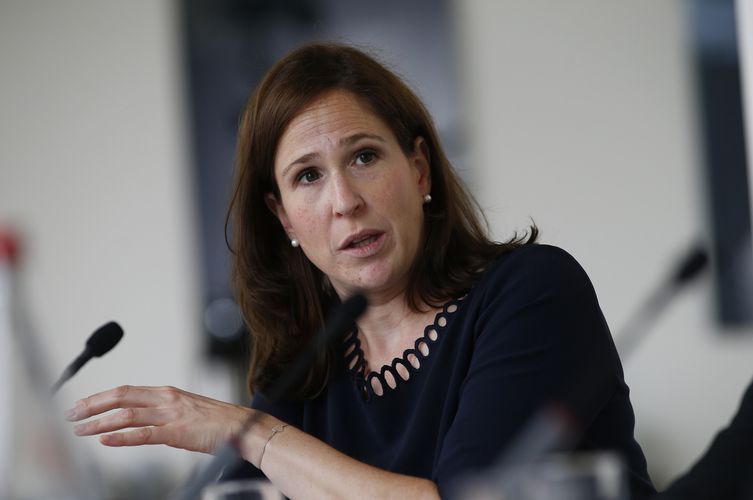To see the digital version of this report, please click here.
To purchase printed copies or a PDF of this report, please email gloria.balbastro@thomsonreuters.com.
IFR: Moving on, where are we in the realm of acquisition finance?
Reinhard Haas, Commerzbank: From our discussion over the last hour, you would think that acquisition finance should be relatively easy to obtain, including for mid-caps and it’s true that it is not that hard to find liquidity to finance yourself. The problem I could see for SMEs in this context is that liquidity is also available for PEs and large-caps, which compete with them for acquisitions.
When mid-cap companies want to engage in acquisition finance, they will have to make a very clear calculation as to what point bid multiples become too expensive. They are in competitions with PEs that’ll pay a higher multiple and don’t have the same imperatives when it comes to immediate-term returns they need to generate from the investment they make.
So yes, acquisition finance is available but what an abundance of liquidity can do to SMEs is that it may push them either into making more risky investments or stay out of the M&A business. This is sometimes a problem we encounter in our discussions with mid-cap companies.
IFR: On M&A more broadly, it looked like we had entered a more positive cycle for trade M&A as well as LBOs. Might we see mid-cap situations, coming to market?
Marion Schiller, Unicredit: The liquidity that’s out there would like to finance these companies but SMEs are more risk adverse than PEs so quite a lot of businesses go to the PE side because they’re also very liquid, they’re very professional and can move more quickly.
SMEs are typically slower and more risk-averse. And it takes longer to convince their shareholders or, if they’re privately owned their owners, to do acquisitions. So we don’t see many acquisitions in the mid-cap space; activity is more on the large-cap side and in the high-grade segment.
Reinhard Haas, Commerzbank: Another development you see in that space is that you not only have PEs, you also have a pick-up in investments by Chinese or Indian corporate that are buying up companies in the mid-cap segment at higher multiples than strategic investors within that segment in Europe are prepared to pay.
The rationale behind these cases is very different from that of a mid-cap company within Europe. For these investors, it’s about gaining market entry. The view that some Chinese or Indian investors have is that they’re not only buying a brand and intellectual property but also market access they didn’t have before and which is valued in a very different way to the discounted cashflow basis that a mid-cap company in Europe would use.
IFR: Willi, is M&A on the radar screen of bond investors when they buy new issues?
Willi Doerges, LBBW: M&A activity isn’t the main reason for investors to engage in transactions. It’s all about the investment and refinancing cycles. In the mid-cap market, it’s about spread, putting certain opportunities next to each other and deciding which one is the most suitable at the time.
On the Schuldschein side, you generally don’t see companies looking for finance for M&A activity; it’s a market for basic finance or growth finance. If an acquisition has taken place, though, you do see take-outs in the Schuldschein market.
Britta Holt, Scope Ratings: When we analysed the SME bond market, we found that 50% of all issuance was done to finance acquisitions. When these companies go to countries like China, for example, they normally establish joint ventures in order to share the risk.
Oliver Rupprecht, Nord/LB: What SMEs need is to start growing capex again. It’s at a low rate at the moment; it is rising a little but it still hasn’t got to the level it was before the crisis. We need more companies to make more investments into their normal capital cycles and not for acquisitions. I think this is going to pick up again.
IFR: Does anyone see any challenges out there?
Jens Voss, Commerzbank: Given the overall liquidity in the market, I think the overall challenge for anyone, not just for the SMEs, will not be a short term one but a medium to long-term one. And it is how do we, from a macroeconomic point of view, get all this liquidity back out of the system? At the moment, liquidity is available, as we’ve discussed, with basically zero covenants. But what is going to happen in a few years time when you start to get back to normal? Liquidity will not be freely and easily accessible, particularly for some of these names.
Matthias Hellstern, Moody’s: One more point, especially in Germany, is that we haven’t seen that many classic SMEs using the classic debt capital markets using rated bonds or so. Most of the transactions that we have rated this year and last were PE-owned companies, which is in contrast to what we see in Spain. It’s actually a good sign that there is an industrial set-up in Spain other than construction and which is profitable and producing goods that are in demand. We’ve rated a couple of transactions for auto suppliers, for example, only recently which went to market because they needed to diversify their sources as the banks were unable, or unwilling, to provide them with the funding.
IFR: I wanted to give you a chance to make a closing comments; around how you see the changes, the opportunities and the challenges around SME funding and how that impacts your day to day?
Matthias Hellstern, Moody’s: The corporates we’re seeing look in good shape. Capital structures we seem trying to come to market are aggressive and are becoming more aggressive. But, in general, the business profiles we see associated with those aggressive capital structures also look OK. But it’s worth pointing out that most of the new ratings we’re assigning, and that we have assigned recently, have been in the Single B area, which implies high risk.
For companies that have come to market and issued bonds, things seem to have worked out pretty well. We’ve also seen a couple of those companies using IPOs to refinance part of their debt, I’m thinking of Stabilus [the automotive supplier that did its €261m IPO in May 2014]. We are continuously busy with regards to new business because a lot of especially PE-owned companies are refinancing via the debt capital markets.
Jens Voss, Commerzbank: From the equity capital markets point of view, I agree Stabilus is a good example. We do see increased issuance by SMEs. There is more to come but there’s room for way more, given the attractiveness of the market.
The only reason it’s not happening to the huge extent it might is simply because of the variety of very attractive alternatives. But we’re very happy with the market environment overall. On the equities side, markets are wide open.
Oliver Rupprecht, Nord/LB: It’s a fine time for borrowers at the moment. They can get good access to different products at good rates and with long maturities. Companies that didn’t have the possibility a year or two ago to secure long maturity loans have that possibility at the moment. On the funding side it’s quite easy. But on the other hand, I see the strong competition between the banks, which will cause problems in the future.
Marion Schiller, Unicredit: You asked how the current situation influences our day-to-day business; from a loans perspective, surplus liquidity is still increasing the competition between banks. That’s leading to great results for clients in terms of pricing and structures. That’s the reality of what we see every day.
Britta Holt, Scope Ratings: On the SME bond side, companies are able to raise relatively cheap money but there’s some disadvantage because they have to repay it and interest rates are likely to rise going forward. We see some huge refinancing risk coming up in this market. On the other hand, there are not many covenants on these financings so we see the need for more investor education.
Willi Doerges, LBBW: As has been said, corporate have all means of finance available at very low prices and very low costs on the banking side. From the investor point of view you simply have to ask, “How low can they go?” with regard to accepting spreads that are pushed into the market.
From the banking side, the arranging banks are experiencing increased competition from new market players in Germany as well as from insurance companies. So to sum it up, I would say that liquidity in the market wants and needs to find funding opportunities.
Michael Wiedmann, IKB: From our point of view this picture is split. The first part, the good part, is, yes, on the SME side we would like to do more business but for that we need companies to invest. These are good companies with solid capital structures, so that’s the kind of business you want to do.
The second half is the more difficult one. If you look at the leveraged lending side, structures are clearly getting more and more aggressive. I just saw the first structures sporting leverage of 8x. We know this won’t last forever, so from that point of view we just have to be very careful.
Reinhard Haas, Commerzbank: For us as banks, competition and low pricing is of major concern. In the immediate term, that’s what’s going to govern most of our activities: finding our way in that kind of environment to make it worthwhile for ourselves.
When I look at SME clients, there are three main drivers we need to take into account. There’s a need for flexibility that we can see in the way products are used. There’s demand for DCM products other than the classic loans or Schuldschein. There is probably a private placement market needed over time, maybe a securitisation market which is going to come into play over time.
I think this is also the result of increasing internationalisation we see around SMEs, especially in export-driven countries such as Germany, the Netherlands or in Scandinavia. That’s going to have an impact on the make-up of the bank groups which SMEs are using, because not all the banks can avail themselves of that. They can avail themselves of cheap liquidity but not necessarily the international aspect of providing products in different parts of the world. That’s a driver behind the way that competition functions today.
M&A is a hot topic and I think that a wave of large-scale M&A activity will draw in the PEs and the mid-caps behind it because when a large-cap buys another company there is a certain portion that it maybe wants to spin off. Mid-caps will find their fair share of this so I think that M&A in mid-cap will be a major factor for us over the next two to six quarters.
IFR: Thanks everyone for providing so much useful insight today.
To continue reading this roundtable, click the relevant section. Introduction - Participants - Part 1 - Part 2 - Part 3

